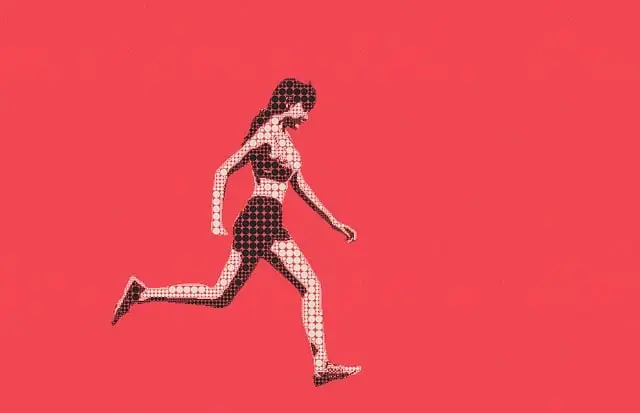Kratom, a botanical from Southeast Asia with active alkaloids like mitragynine and 7-hydroxymitragynine, is being explored for its potential benefits in managing depressive symptoms and muscle soreness. Users often report positive effects from specific strains like Red Bali, Green Malay, Maeng Da, Borneo, and Bali, considering them among the best kratom for depression and pain relief. These strains are believed to engage with opioid receptors in the brain, offering mood-enhancing and analgesic properties. It's important to note that while these claims are based on user experiences and anecdotal evidence, scientific investigation into kratom's mechanisms is ongoing. Individuals should consult healthcare professionals before using kratom due to the complexity of mental health conditions and the variability in how different strains affect people. The best kratom for depression may vary depending on personal tolerance and the desired balance between stimulation and sedation, with White Vein Kratom providing an energetic boost and Red Vein Kratom offering more relaxation. Ensuring the purity and quality of kratom products is essential for both effectiveness and safety when seeking its benefits for depression or muscle recovery.
Muscle soreness can be a persistent impediment to maintaining an active lifestyle, often exacerbated by the mental health challenges of depression. This article delves into the multifaceted benefits of kratom, a botanical substance gaining attention for its potential in alleviating both muscle soreness and depressive symptoms. We’ll explore the scientific underpinnings of how kratom interacts with the body to aid in recovery, guide you through the variety of strains to identify the best kratom for depression and muscle relief, and provide insights into a holistic approach to well-being. Join us as we navigate the complex relationship between physical and mental health, with kratom as a potential natural ally in your journey towards relief.
- Understanding Muscle Soreness and Kratom's Role in Relief
- The Science Behind Kratom and Its Effects on Muscle Recovery
- Navigating Strains: Finding the Best Kratom for Muscle Soreness and Depression Relief
Understanding Muscle Soreness and Kratom's Role in Relief

The Science Behind Kratom and Its Effects on Muscle Recovery

Kratom, a plant originating from Southeast Asia, has been the subject of increasing interest within natural health and wellness communities for its potential effects on muscle recovery and pain relief. The science behind kratom’s actions lies in its active alkaloids, primarily mitragynine and 7-hydroxymitragynine, which interact with various receptors in the brain, including opioid receptors. These interactions can influence the body’s pain response, leading to analgesic effects that may aid in muscle recovery by reducing discomfort associated with muscle strain or injury.
Research suggests that certain strains of kratom, often cited as the best kratom for depression and anxiety due to their uplifting properties, may also play a role in alleviating chronic pain and promoting a state conducive to healing. For instance, users often report that strains such as Maeng Da and Borneo can help manage muscle soreness following intense physical activity. The anti-inflammatory effects of kratom may further contribute to its muscle recovery benefits by helping to minimize inflammation, which is a common cause of delayed onset muscle soreness (DOMS). However, it is important for individuals to consult with healthcare professionals before incorporating kratom into their health regimen, as the appropriate dosage and long-term effects can vary based on individual physiology.
Navigating Strains: Finding the Best Kratom for Muscle Soreness and Depression Relief

When exploring kratom’s potential in addressing muscle soreness and depression relief, it’s crucial to navigate the diverse spectrum of kratom strains available. Kratom, a plant from Southeast Asia, contains alkaloids that may interact with the brain and nervous system receptors, offering both pain-relieving and mood-enhancing effects. For individuals experiencing muscle soreness, whether from intense physical activity or chronic conditions, certain kratom strains are often favored for their analgesic properties. Among these, Maeng Da Kratom is frequently cited as one of the best kratom for depression due to its well-balanced alkaloid profile that may help manage pain and improve mood without the sedative effects typically associated with other strains. Additionally, Bali Kratom, known for its relaxing properties, can also be beneficial for muscle soreness, providing a sense of calm that may aid in coping with depressive symptoms.
In the quest for the best kratom for depression and muscle soreness relief, it’s important to consider personal tolerance and the specific effects one might experience. The alkaloid content can vary significantly between strains, leading to differing levels of stimulation or sedation. For example, White Vein Kratom strains such as White Borneo or White Horn may offer invigorating effects that could uplift mood while potentially mitigating pain perception. Conversely, Red Vein Kratom strains like Red Bali or Red Thai are typically associated with more profound relaxation and analgesic benefits, which can be particularly helpful for those experiencing musculoskeletal discomfort combined with depressive feelings. As with any natural supplement, individual experiences will differ, and it may require some experimentation to determine the most effective strain for one’s specific needs. Always prioritize quality and purity when selecting kratom products, as these factors significantly influence their efficacy and safety.
Muscle soreness, often a consequence of intense physical activity, can be alleviated through natural remedies like kratom. The article explored how kratom interacts with the body to promote muscle recovery and potentially relieve symptoms of depression, particularly when using strains known for their analgesic and mood-enhancing properties. Understanding the science behind kratom’s effects provides a foundation for its use in managing post-exercise discomfort as well as low mood. By carefully selecting the appropriate strains, individuals can experience effective muscle soreness relief and support for their emotional well-being, making kratom a multifaceted option for those seeking natural ways to cope with these issues. When considering kratom for either condition, it is important to approach its use responsibly and in accordance with legal guidelines, as well as consulting healthcare professionals to ensure safe application in one’s health regimen.






